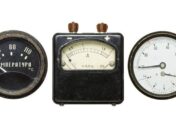Designing a better board meeting
4 steps to make better use of the board’s time and effort
I’ve worked with countless nonprofit leaders—board and staff—over the past decade, and I’ve found that people generally have pretty strong feelings about nonprofit board meetings. On one end of the spectrum, I often hear comments like this:
-
- “Sometimes I’m sitting there on a Tuesday night, away from my family and my dinner and even my TV… And I imagine sending a houseplant in my place. I’m not sure anyone would notice, for all I’m asked to contribute to the discussion.”
-
- “We just rehash the same old stuff, we get bogged down in operational minutia, and this one guy will not stop droning on.”
-
- “I care about the organization, but I don’t really get what’s expected of me or what we’re actually doing in these meetings. I’m new to boards, so maybe this is what it’s supposed to be like?”
Occasionally, I hear things like this:
-
- “Wow, that was a really hard conversation, and I’m so glad we had it. I think we have a much better understanding of where we are now, and we finally talked directly about what we’re actually facing as an organization.”
-
- “I LOVE our board meetings. I always learn something, and it’s where we actually make decisions and get things done!”
How would you describe your board meetings, and is there room to make them better?
An observation and a recommendation:
THE OBSERVATION: For most boards (with notable exceptions, such as the start-up phase of an organization, or in the midst of a crisis, a major capital campaign, or a CEO search), I’ve observed that it takes about the same amount of time to be a semi-engaged, sorta-rubberstamp-y, mostly-do-no-harm board as it does to be a highly-engaged, strategically useful, and effective board.
THE RECOMMENDATION: Since board meetings are where working relationships are established, where board culture is formed, and where the formal work of the board is done, meetings present a crucial opportunity for strengthening board effectiveness. So make some time to look how your organization approaches board meetings. Identify what’s working and what isn’t, set some priorities, and experiment with some strategic changes. The following steps will walk you through it.
Usually, the Board Development Committee or the Executive Committee coordinates this process, along with the Executive Director. I’ll call them the Work Group.
Step 1. The Icebreaker: Uncork the conversation
The Work Group will get the ball rolling by scheduling some time on an upcoming agenda in two chunks: 20 minutes for an icebreaker at the beginning, and 10 minutes at the end for a quick written evaluation (which is covered in Step 2).
THE ICEBREAKER: Focus on two questions about meetings. Give folks 2 minutes to jot down at least one response to each question, inviting them to draw upon what they’ve experienced in ANY of the meetings they’ve ever attended (at work, as a volunteer, in a community setting, etc.):
-
- Have you ever come away from a meeting really excited about what the group accomplished and where it was going next? What tips did you learn about making meetings great?
-
- Have you ever been to an unspeakably ineffective meeting? What caused it? What tips did you learn for what we should avoid or do differently?
After they’ve had a chance to reflect individually, have them talk in pairs for 8 minutes. Then do a speed-round of report-outs: hot tips of things to do to make meetings great, and hot tips about what to avoid. Have somebody capture the tips.
Keep it lively and keep it moving. Manage time so that this topic doesn’t take over the meeting itself. Wrap up the ice-breaker by letting people know that a meeting evaluation is scheduled at the end of your agenda, and that the Work Group will review the results and report back with some insights and recommendations.
Continue with your meeting as planned.
Step 2. The Evaluation: Assess the situation
THE EVALUATION: This is a brief, two-page evaluation form I often use when I’m working with boards. For most of them, I’ve found that taking 10 minutes at the end of a meeting with paper copies of the evaluation yields the highest participation rate and the most accurate and useful feedback.
Step 3. The Review: Identify priority issues
Circulate copies of the evaluations to the work group. Review the results individually, to get familiar with the feedback, and to start making a list of what jumps out at you: both questions and observations. (This step helps prevent groupthink.) Then review the results together. Here are a few tips about what to look for:
-
- Pay attention to where responses are strongly aligned. If everybody thinks that X is great and everybody agrees that Y is terrible, then that helps shape priorities. Celebrate and keep X. Adjust Y.
-
- Get extra-curious about responses that are wildly divergent. For example, what does it mean if 5 people strongly disagree with the statement “All attendees were encouraged to participate”, 4 people are neutral, and 6 people strongly agree? Hmmm. Get curious about that – it could be hitting on something really meaningful. When that kind of response shows up, it could mean different things in different settings: are the expectations about participation unclear, or are the practices intimidating? Maybe new board members don’t feel empowered to ask questions. Perhaps the use of jargon is intimidating. Maybe certain voices are being elevated and certain voices are being marginalized or dismissed. Maybe the archaic practices of ‘making motions’ and ‘calling for questions’ means that some people speak the language and some people don’t.
-
- Recognize that some useful perspectives might not be in the room. If your board does not reflect the community you operate in and the community you serve, you might not have access to insights about the ways in which board meetings might be inaccessible, or board practices might be problematic.
While there are limits to what you can learn through self-evaluation, it’s still a useful exercise that can help you identify opportunities to make your meetings more effective.
Step 4. The Experiments: Decide what changes you’re going to try
Of course, there’s no one-size-fits-all set of recommendations, because you’ll be responding to the particulars of your situation. That said, here are some ideas about how to address some of the common issues that get in the way of good meetings:
Revisit the meeting agenda.
-
- Use consent agendas to streamline routine items and make room for meatier discussion
- Clarify expectations on the agenda itself: How much time is allocated for this item, and who’s leading the discussion? Is the topic being introduced, a proposal being made, or a time-sensitive decision required?
- Plan an annual calendar of topics, based on the priorities and needs of the board. Regularly allocate meeting time for board priorities and projects. (Typically, a well-planned and well-run two-hour meeting can accommodate one more in-depth agenda item: say, a 30-minute or 45-minute segment for training on relevant topics, or mini-work sessions to advance the board’s fundraising, recruitment, or other projects.)
Make time to connect:
-
- Connect with your fellow board members, to deepen relationships, build trust, and learn about each other’s perspectives and background.
- Connect with the mission. It doesn’t have to be long or involved, it’s a reminder of what your work is really about. It could be a brief program highlight, such as a recording studio playing some compositions by recent students, or a job skills program sharing a story about a client who got the job of their dreams. (And, occasionally, it could be a more in-depth conversation or experience. For example, a trails association board had one of their meetings in a park shelter, so that the board could see a newly–accessible park trail that the organization had worked on for months.)
- Engage in informed, purposeful discussion. (Don’t pack nine topics into two hours and expect thoughtful dialogue.)
Break bread:
-
- This is about hospitality, culture, and connections, as well as basic biological needs. While it doesn’t have to be a banquet, food makes for better meetings. Some of the organizations I work with provide it; some have board members sign up to take turns, some organizations pot-luck it. Find what works. (Often, having a 30-minute ‘drop-in-and-snack’ arrival time—scheduled before the start time of the meeting, and included on the agenda—gives folks an informal chance to connect, and makes meetings more likely to start on time.)
Ask and encourage questions. (Stay tuned for another article on this.)
Come prepared for meaningful discussions and decision-making:
-
- This is contingent upon advance access to information. There’s not a set formula, so experiment with what works. My recommendation is that board members have at least four days, including a weekend, to review the board packet. (More lead time might be more appropriate for your board, but at some point, there’s a trade-off. If the board packet is distributed too far in advance, the information that the board reviews might not be current by the time of the meeting.)
- It’s also important to clarify what kinds of information the board needs. If the board packet is routinely 20+ pages, I can virtually guarantee that people aren’t reading it thoroughly and/or are lightly skimming (especially the financials). So what IS important, how do you draw the board’s attention to it, and how do you put it in a meaningful context? (And what supplemental info is provided for those who are interested in a deeper dive?)
Be mindful of the impact of information requests on the staff. While a certain report might be interesting to look at before the next board meeting, it might not be necessary, useful, and/or the best use of staff time.
-
- Is it must-have information for appropriate oversight? (For example, accurate and timely financial statements.)
- Is it need-to-have info for strategic decision-making? (For example, many boards understand their financial picture better when there’s a narrative explanation of budget variance, which provides meaningful context about what caused something to be above or below budget, and what that means for programs, staffing, etc.)
- Or is it kinda-might-be-nice-to-have-but-maybe-we-won’t-be-interested-in-it-by-next-month information? (Like, say, that one time that the board asked for detailed numbers on X, which took staff 15 hours to research and assemble, and then the board never even looked at those numbers. I probably don’t need to mention that that’s super-annoying and demoralizing.)
End with a re-cap of assignments:
-
- What did we agree to? Who’s doing what? By when?
- Well before the next meeting, remind people about assignments and deadlines. (Of course, this depends on whether you’re meeting monthly, quarterly, etc, so talk about what’s most useful for your board.)
Evaluate yourselves. Do some kind of board self-assessment on an annual-ish basis. This can include questions about board performance, training needs, and interest in leadership positions. (Stay tuned for a future article on this.)
Consider this an experiment (and frame it that way with the board)
You’ll try some things for a period of time, and then the Work Group should reconvene to talk about what’s working better, and what would benefit from additional tweaks.
If you have any breakthroughs or hot tips, I’d love to hear about them so that we can share what’s working and what to avoid. You’re welcome to contact me here.
Want more ideas?
Check out this earlier collaborative post from five consultants on “Best Ever Ideas to Improve Your Board Meeting”.
________________________________
This article is cross-posted on Nonprofit Notes. I’m honored to be one of the contributors to Nonprofit Notes, which has all kinds of useful articles on leadership, board development, fundraising strategy, organizational change, executive searches, and more. So while you’re there, please take a look around. And if you’d like to subscribe, you’ll get notified as new articles get posted. Stay tuned for an article about ‘asking better questions’, and one on ‘favorite books and podcasts’.





![Staying connected over [social] distance](https://www.shorthandconsulting.com/wp/wp-content/uploads/2020/03/hans-peter-gauster-3y1zF4hIPCg-unsplash700x200-176x128.jpg)









